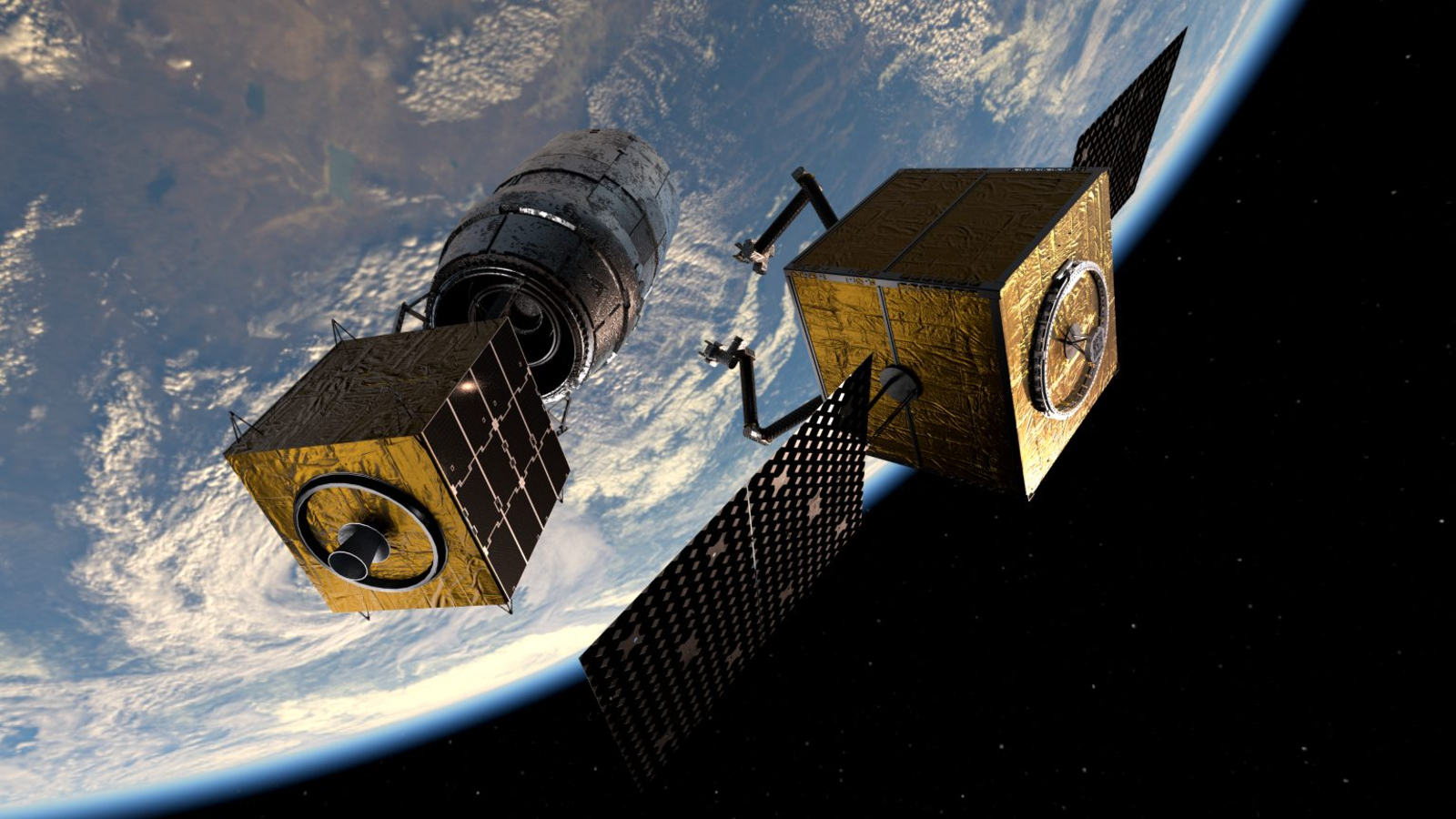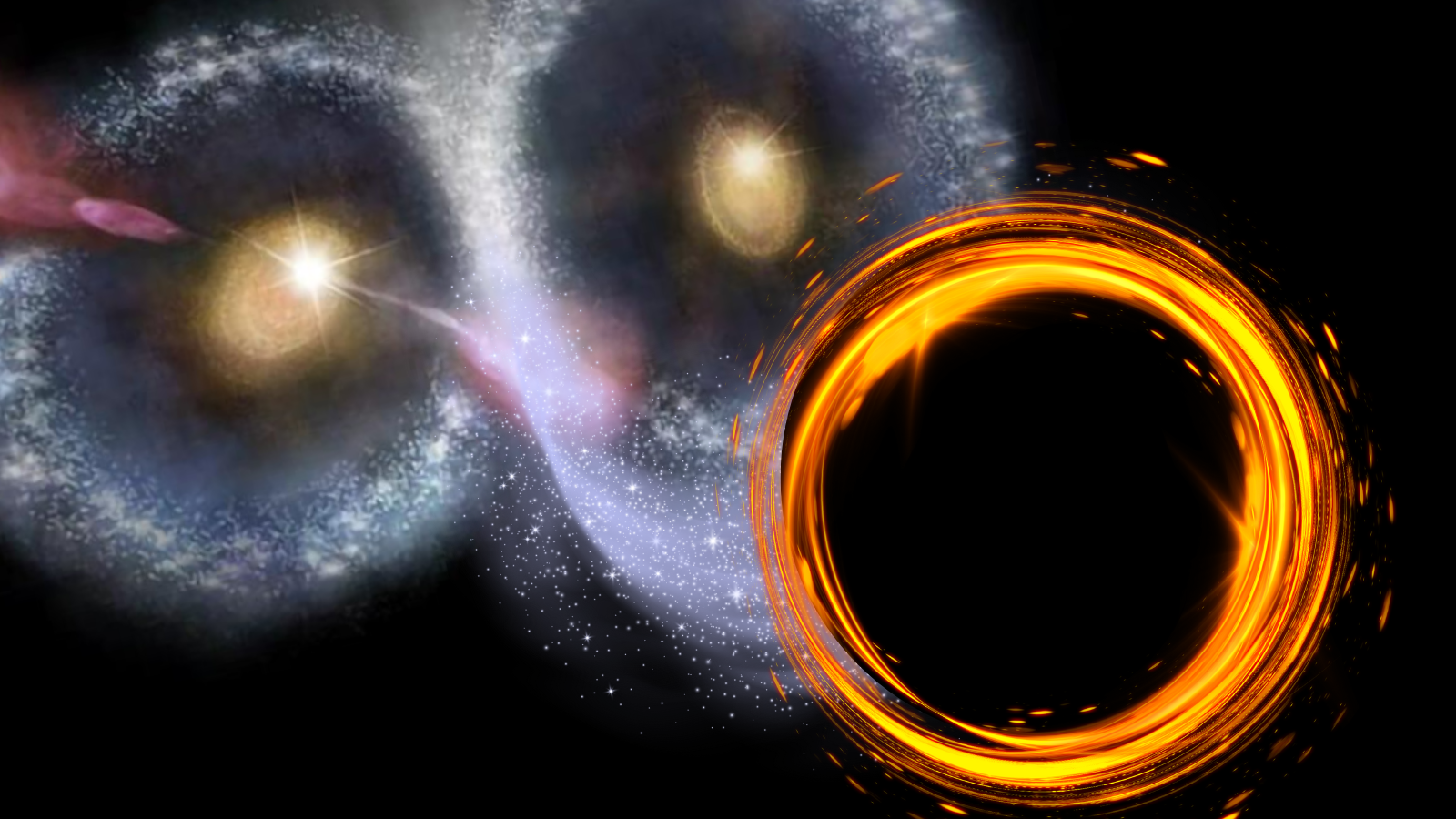Space junk cleanup tech that could 'shepherd' debris into Earth's atmosphere gets US patent
"Our distributed architecture solves a key challenge in orbital debris removal by enabling the deorbit and reentry of multiple large debris objects sustainably and economically."

The Japanese space-sustainability company Astroscale has unveiled a patent for what it describes as a new method for space debris removal.
Astroscale has developed a distributed, reusable system that aims to be more cost-effective and agile than traditional approaches to active debris removal (ADR). The system is described in a U.S. patent for its "Method and System for Multi-Object Space Debris Removal."
The new method involves a single servicing spacecraft docking with multiple large space debris objects, such as defunct satellites and spent rocket stages — and transferring them to a separate vehicle, dubbed a "shepherd," for controlled reentry into Earth's atmosphere, away from populated areas.
This not only makes debris removal more cost-effective and scalable but also reduces the risk of debris surviving reentry and threatening people or infrastructure on the ground.
"This patented innovation offers a sustainable and cost-effective distributed architecture approach to active debris removal, allowing for scalable, repeatable ADR operations and controlled reentry of multiple debris objects," Astroscale said in a statement.
The system is also highly flexible, allowing different mission profiles depending on the object's size and risk. The shepherd vehicle can stay docked through reentry, detach and return to orbit, or be skipped altogether if the mission allows.
"Our distributed architecture solves a key challenge in orbital debris removal by enabling the deorbit and reentry of multiple large debris objects sustainably and economically," Mike Lindsay, Astroscale's chief technical officer, said in the same statement.
Breaking space news, the latest updates on rocket launches, skywatching events and more!
"This approach allows us to reuse our advanced servicers, capable of capturing and detumbling multi-ton objects, instead of burning them up with the debris upon reentry," Lindsay added. "This not only saves cost but also reduces the amount of potentially harmful material released into the Earth's upper
conducted a stunning up-close approach and surveillance of a discarded rocket stage as part of its ADRAS-J mission. It is preparing to launch the ELSA-M space junk collector in 2026 and will also soon attempt refueling of U.S. Space Force satellites in geostationary orbit. Astroscale will also attempt to deorbit a bus-sized rocket stage with its ADRAS-J2 mission before the end of the decade.
The company says its on-orbit servicing solutions support the secure and sustainable use of space for future generations.

Andrew is a freelance space journalist with a focus on reporting on China's rapidly growing space sector. He began writing for Space.com in 2019 and writes for SpaceNews, IEEE Spectrum, National Geographic, Sky & Telescope, New Scientist and others. Andrew first caught the space bug when, as a youngster, he saw Voyager images of other worlds in our solar system for the first time. Away from space, Andrew enjoys trail running in the forests of Finland. You can follow him on Twitter @AJ_FI.
You must confirm your public display name before commenting
Please logout and then login again, you will then be prompted to enter your display name.
